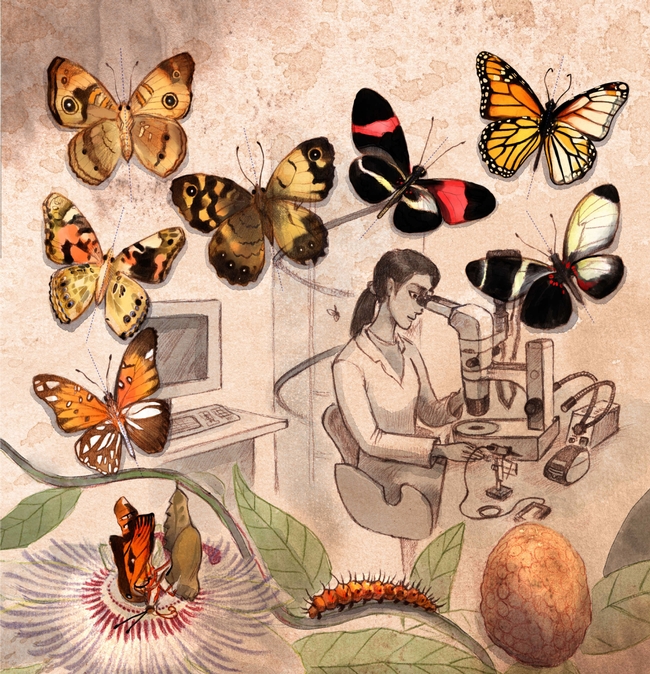- Author: Kathy Keatley Garvey

They range in topics from fruit flies to spider glue to an African odysssey.
The seminars take place at 4 p.m. every Wednesday in Room 122 of Briggs Hall, beginning April 3 and ending June 5.
The schedule:
Wednesday, April 3
Alistair McGregor, Oxford Brookes University, England
Topic: "Differences in Tartan Underlie the Evolution of Male Genital Morphology Between Drosophila Species"
Host: Geoffrey Attardo, assistant professor, UC Davis Department of Entomology and Nematology
Wednesday, April 10
Monique Rivera, UC Riverside
Topic: "How Agriculture Influences the Structure of Belowground Communities"
Host: Elvira de Lange, postdoctoral fellow, UC Davis Department of Entomology and Nematology"
Wednesday, April 17
Bert Hölldobler, Arizona State University
Topic: "The Superorganism: Communication, Cooperation and Conflict in Ant Societies"
Host: Robert Page, distinguished emeritus professor, UC Davis Department of Entomology and Nematology and provost emeritus, Arizona State University
Wednesday, April 24
Sarah Stellwagen, University of Maryland
Topic: "Towards Spider Glue: From Material Properties to Sequencing the Longest Silk Family Gene" (Link)
Hosts: Hanna Kahl, doctoral student in entomology, and Jason Bond, the Evert and Marion Schlinger Endowed Chair in Insect Systematics, UC Davis Department of Entomology and Nematology
Wednesday, May 1
Andrew Nuss, University of Nevada, Reno
Topic: "Breaking Insecticide Resistance: Novel Strategies for Insect Pest Management"
Host: Geoffrey Attardo, assistant professor, UC Davis Department of Entomology and Nematology
Wednesday, May 8
Colin Orians, Tuffs University, Massachussetts
Topic: "Mitigating the Effects of Climate Change on Tea Agroecosystems in China"
Host: Rachel Vannette, assistant professor, UC Davis Department of Entomology and Nematology
Wednesday, May 15
Erin Wilson-Rankin, UC Riverside
Topic: "Ecological Factors Underlying Diet Shifts in California Pollinators"
Host: Rachel Vannette, assistant professor, UC Davis Department of Entomology and Nematology
Wednesday, May 22
James R. Carey, distinguished professor of entomology, UC Davis Department of Entomology and Nematology
Topic: African Odyssey: Natural Wonders, Wildlife Adventures, and Indigenous Peoples"
Wednesday, May 29
Laurence Packer, York University, Canada
Topic: "Extreme Bees in Extreme Environments: Bee Biogeography in the Atacama Desert"
Hosts: Leslie Saul-Gershenz, associate director of research, Wild Energy Initiative, John Muir Institute of the Environment, UC Davis, and Steve Nadler, professor and chair, UC Davis Department of Entomology and Nematology
Wednesday, June 5
Immo Hansen, New Mexico State University
Topic: "Toward Implementation of Mosquito Sterile Insect Technique"
Host: Geoffrey Attardo, assistant professor, UC Davis Department of Entomology and Nematology
More information is available from Attardo at gmattardo@ucdavis.edu.
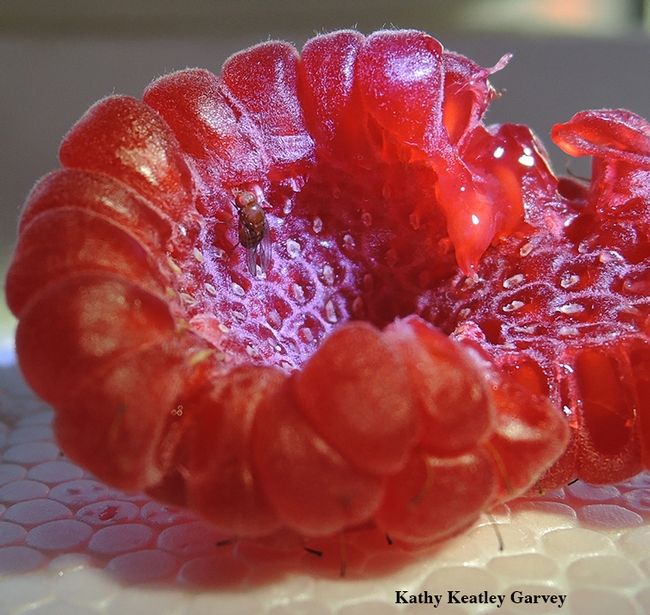
- Author: Kathy Keatley Garvey
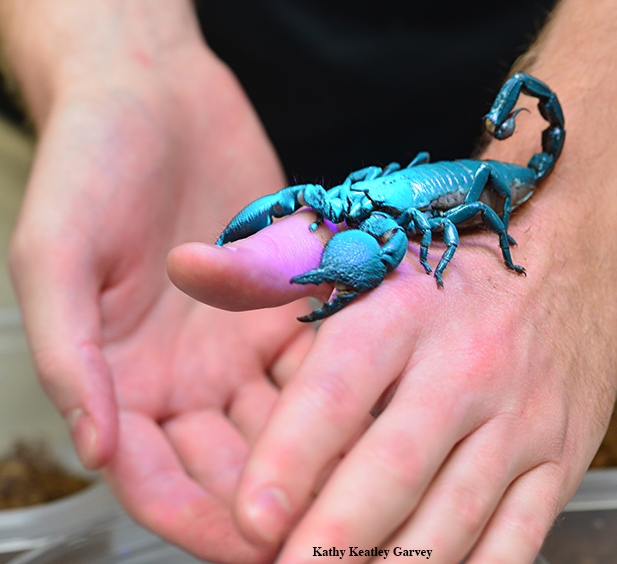
But did you know that scorpions are the oldest living terrestrial arthropods on the planet--that they're approximately 400 million years old? And that these "living fossils" were here before the dinosaurs?
And, did you also know that scorpions are the only arachnids that give birth to live young?
All fascinating facts.
Scorpion scientist Lauren Esposito of the California Academy of Sciences, will reveal those facts--and much more--when she discusses her research at the UC Davis Department of Entomology and Nematology seminar on Wednesday, Feb. 27.
Esposito, assistant curator and Schlinger chair of Arachnology at the California Academy of Sciences, San Francisco, will speak on "Evolution of New World Scorpions and Their Venom" from 4:10 to 5 p.m. in 122 Briggs Hall. Host is Jason Bond, Evert and Marion Schlinger Endowed Chair in Insect Systematics, UC Davis Department of Entomology and Nematology.
Scorpions are just about everywhere; they're found on every continent except Antarctica. In fact, they're found in every ecosystem on the planet, from cave systems below sea level to the peaks of the Alps and the Andes, Esposito says. Although scientists have described 2,200 species of scorpions, Esposito estimates that this number encompasses only 60 percent of the group's total diversity. In her research, she's trying to fill in that taxonomic gap.
Scorpions first drew Esposito's interest in her childhood. Both her parents are biologists. She remembers visiting her grandparents on a remote island in the Bahamas. “The most dangerous things on the island were ants and scorpions, so it was a pretty ideal place for a child to explore,” she quips on the Cal Academy website.
Esposito served a summer undergraduate internship in arachnology at the American Museum of Natural History (AMNH), and did volunteer work at a field station in the Chihuahuan Desert. She returned to AMNH to complete her doctorate in arachnology, and then completed a postdoctoral fellowship studying the biogreography of scorpions in the Caribbean. In 2015, she accepted an arachnologist position at the Cal Academy.
"For the past several years, Esposito has studied the evolution and geographical distribution of scorpions in the Caribbean," according to the Cal Academy website. "She suspects the string of islands played a significant but underappreciated role in producing the biodiversity currently found in North and South America. Because scorpions are essentially 'living fossils,' they're ideal organisms to study to decipher this larger relationship. Understanding the biodiversity of this region in a time of rapid agricultural development is a key step toward sustaining it for sustaining it for future generations."
Esposito marvels that a single scorpion "can carry the genes for more than 200 unique venoms in its DNA." She describes those venom varieties as "like protein cocktails, mixed to affect specific mammals, insects, and crustaceans."
“Researchers think that scorpions eject venoms with different compositions depending on the scenario," she says. "If they encounter a predator, they'll eject one combination, and if they encounter prey, a different one.” The venom's effects? Pain, temporary paralysis, or death.
Esposito focuses her research on the evolution of scorpion venom alongside the evolution of scorpions. This makes her unique among venom experts, who are often toxicologists or biochemists studying its chemistry, according to the Cal Academy website.
“Looking at how this venom diversity evolved helps us understand how one creature can evolve the ability to strike hundreds of specific targets,” explains Esposito. “There's a kind of evolutionary arms race happening between scorpions and mammals, particularly with predatory, nocturnal scorpion mice.”
Cal Academy's YouTube video on The Anamolies: Venom Race points out that although "the stings of most scorpions are harmless to humans, a select few can be fatal. Striped bark scorpions, a group of species found in the southwestern U.S. and northern Mexico, inflict on average 100,000 stings and, until recently, caused more than a thousand deaths each year in Mexico alone. While finding a treatment to this public health concern has been a driving force behind studies of bark scorpion venom, there was one very basic question that had scientists scratching their heads: Why and how would such a tiny creature pack such a lethal punch? Now, researchers, including Lauren Esposito, curator of Arachnology at the California Academy of Sciences, think they've found the answers in the interplay between a diminutive but dauntless predator—a mouse that has a particular taste for these venomous invertebrates—and the scorpions' own genetic makeup."
Check out these other incredible videos on the Cal Academy website:
Medical entomologist Geoffrey Attardo, assistant professor, UC Davis Department of Entomology and Nematology, coordinates the weekly seminars.
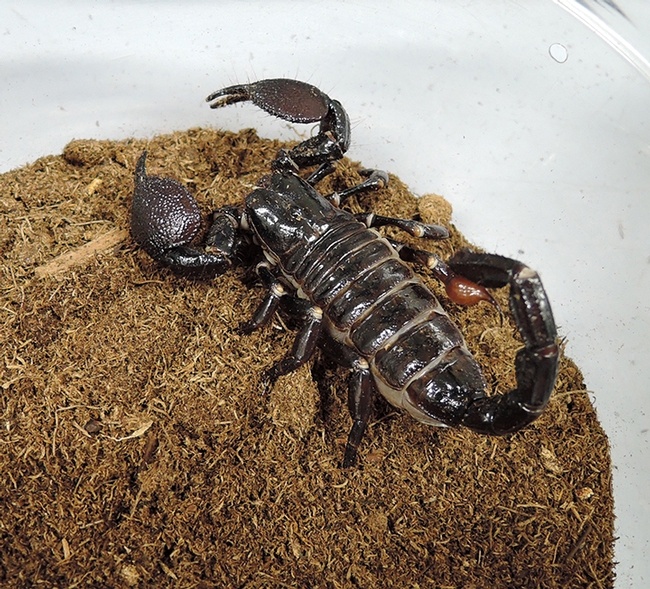
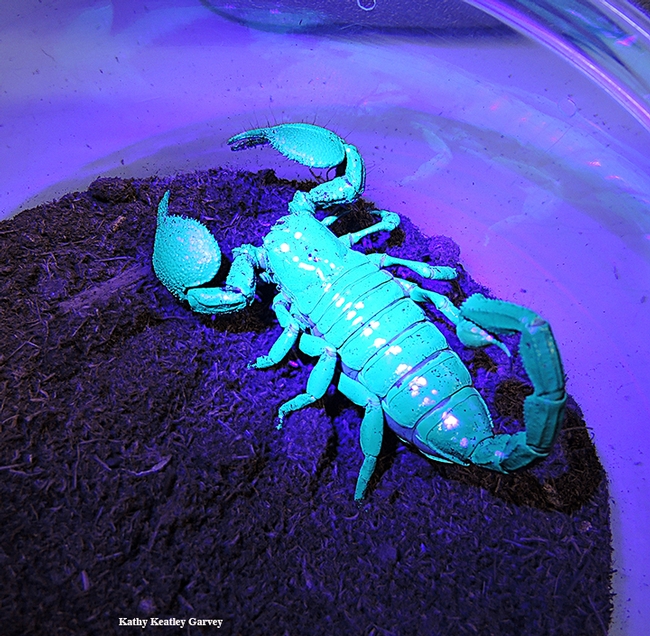
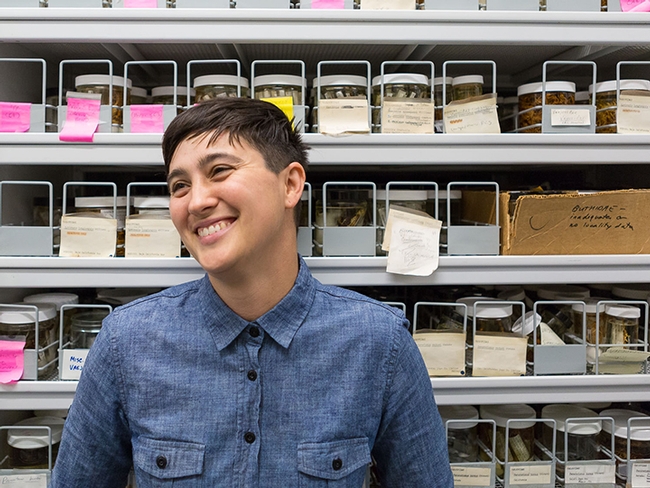
- Author: Kathy Keatley Garvey
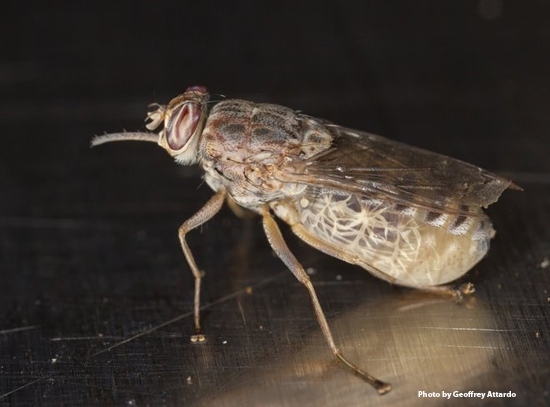
Totally fascinating.
Tsetse fly expert Geoffrey Attardo, a medical entomologist and assistant professor with the UC Davis Department of Entomology and Nematology, drew the attention of Pulitzer-Prize winning science writer Natalie Angier who penned the article, "Everywhere in the Animal Kingdom, Followers of the Milky Way" (subhead: "As scientists learn more about milk's evolution and compositional variations, they are redefining what used to be a signature characteristic of mammals.")
Her lede: "Most female flies take a low-rent approach to parenthood, depositing scores of seed-sized eggs in the trash or on pet scat to hatch, leaving the larvae to fend for themselves."
"Not so the female tsetse fly. She gestates her young internally, one at a time, and gives birth to them live. When each extravagantly pampered offspring pulls free of her uterus after nine days, fly mother and child are pretty much the same size."
Then she quoted the UC Davis medical entomologist:
“It's the equivalent of giving birth to an 18-year-old,” said Geoffrey Attardo, an entomologist who studies tsetse flies at the University of California, Davis.
Attardo focuses his research on numerous aspects of the physiology of tsetse fly reproduction, with the goal to identify and understand key aspects of its reproductive biology. He joined the UC Davis Department of Entomology and Nematology in 2017 from tje Yale University School of Public Health, New Haven, Conn., where he researched tsetse flies in the lab of Serap Aksoy.
In terms of "fascinating physiological adaptations," Attardo considers the tsetse fly "one of the champions of the insect world!" As he explained to us in a 2017 news story: "In addition to being vectors of a deadly disease, Trypanosomiasis, these flies have undergone amazing alterations to their physiology relative to other insects. Some examples of this are their ability feed exclusively on blood, their obligate relationship with a bacterial symbiont, the fact that they lactate and that they give birth to fully developed larval offspring."
"The opportunity to study the adaptations these flies have made is like opening a toy chest for an insect physiologist. My work in tsetse has focused on the molecular biology underlying the adaptations associated with the development of lactation, symbiosis, male and female mating interactions/physiology and nutrient metabolism and mobilization.”
Attardo's published research is drawing national and international attention, as are his incredible images of tsetse flies. He won the 2010 Fogarty Grantee Photo Contest with an image of a tsetse fly. The Yale School of Public Health magazine featured his images on “An Eye for the Tsetse Fly.” The Los Angeles Times published his remarkable video (in 2014) of a tsetse fly giving birth. Also, see his portraits of the tsetse fly on Live Science, published in 2014.
In her New York Times article, Angier points out that "Only in the class Mammalia do all member species nurse their young, yet evolutionary biologists now believe that the roots of mammalian lactation date back more than 300 million years, a good 100 million years before the first mammals appeared."
Who knew?
And while on the subject of tsetse flies, be sure to read the September 2016 article, "Tsetse Flies Are Strange and Dangerous," by Kevin Fitzgerald in Entomology Today, a publication of the Entomological Society of America. Fitzgerald featured the work of Attardo and posted one of his photos.
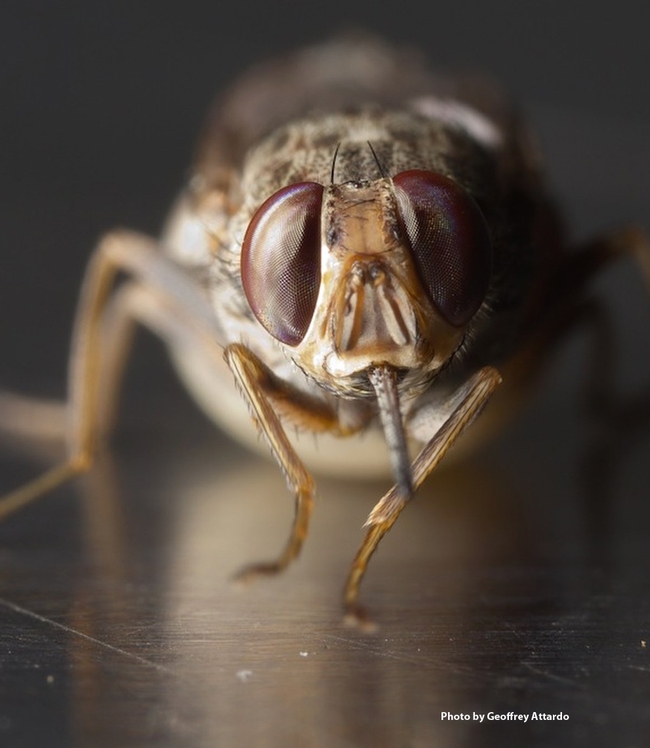
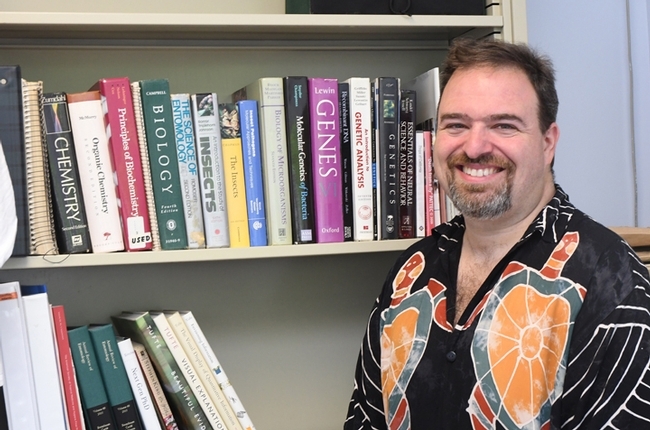
- Author: Kathy Keatley Garvey

Medical entomologist Geoffrey Attardo, assistant professor, UC Davis Department of Entomology and Nematology, has compiled a great line-up of speakers for the winter quarter. The Wednesday seminars, to begin Jan. 9 and continue through March 13, will take place from from 4:10 to 5 p.m. in 122 Briggs Hall. They are open to all interested person. Some seminars will be recorded for later posting.
First up on Jan. 9 is Brian Gress, a postdoctoral fellow in the lab of integrated pest management specialist Frank Zalom, distinguished professor of entomology in the UC Davis Department of Entomology and Nematology and a past president of the 7000-member Entomological Association of America. Gress will discuss the fruit fly, Drosophila suzukii: its host selection and resistance evolution.
The spotted-wing drosophila, a major agricultural pest, damages fruit in many California counties, according to the UC Statewide Integrated Pest Program (UC IPM). First discovered here in 2008, "it infests ripening cherries throughout the state and ripening raspberry, blackberry, blueberry, and strawberry crops, especially in coastal areas. It also has been observed occasionally attacking other soft-flesh fruit such as plums, plumcots, nectarines, and figs when conditions are right."
The adults are about 1/16 to 1/8 inch long with red eyes and a pale brown thorax and abdomen with black stripes on the abdomen, UC IPM says on its website. The males have a black spot toward the top of each wing. The females have not spots. They have "a very prominent, sawlike ovipositor for laying eggs in fruit."
The seminars, as of today, Dec. 20:
Wednesday, Jan. 9
Brian Gress, postdoctoral fellow in the Frank Zalom lab, UC Davis Department of Entomology and Nematology
Title: "Host Selection and Resistance Evolution in Drosophila suzukii"
Host: Frank Zalom, distinguished professor of entomology, UC Davis Department of Entomology and Nematology
Wednesday, Jan. 16
Sarah Stellwagen, postdoctoral researcher, University of Maryland
Title: “Toward Spider Glue: From Material Properties to Sequencing the Longest Silk Family Gene”
Hosts: Hanna Kahl, doctoral student in the Jay Rosenheim lab, and Jason Bond, Evert and Marion Schlinger Endowed Chair in Insect Systematics, UC Davis Department of Entomology and Nematology
Wednesday, Jan. 23
Pending
Wednesday, Jan. 30:
Laura Burkle, assistant professor of ecology, Montana State University, Bozeman
Topic: Wild bees, interactions with flowers
Hosts: Pollination ecologist Neal Williams, professor of entomology, and Maureen Page, doctoral student in the Williams lab, UC Davis Department of Entomology and Nematology
Wednesday, Feb. 6
Alan Hastings, theoretical ecologist and distinguished professor, UC Davis Department of Environmental Science and Policy
Title: "Stochasticity and Spatial Population Dynamics"
Host: Hanna Kahl, doctoral student in the Jay Rosenheim lab, UC Davis Department of Entomology and Nematology
Wednesday, Feb. 13
Antoine Abrieux, postdoctoral fellow, Joanna Chiu lab, UC Davis Department of Entomology and Nematology
Title: "Understanding the Molecular Mechanisms underlying Photoperiodic Time Measurement in Drosophila melanogaster"
Host: Joanna Chiu, associate professor and vice chair of the UC Davis Department of Entomology and Nematology
Wednesday, Feb. 20:
Alexander Raikhel, distinguished professor, UC Riverside
Title: "The Role of Hormone Receptors and MicroRNAs in Mosquito Reproduction and Metabolism"
Host: Geoffrey Attardo, assistant professor, UC Davis Department of Entomology and Nematolgoy
Wednesday, Feb. 27:
Lauren Esposito, faculty member, San Francisco State University, and assistant curator and Schlinger Chair of Arachnology at the California Academy of Sciences
Title: "Evolution of New World Scorpions and Their Venom"
Host: Jason Bond, Evert and Marion Schlinger Endowed Chair in Insect Systematics, UC Davis Department of Entomology and Nematology
Wednesday, March 6:
Monika Gulia-Nuss, assistant professor, biochemistry and molecular biology, University of Nevada, Reno
Topic: DNA Methylation in Ticks
Host: Geoffrey Attardo, assistant professor, UC Davis Department of Entomology and Nematology
Wednesday, March 13:
Pending
Spring Break: March 20-27
For further information on the seminars, contact Geoffrey Attardo at gmattardo@ucdavis.edu.
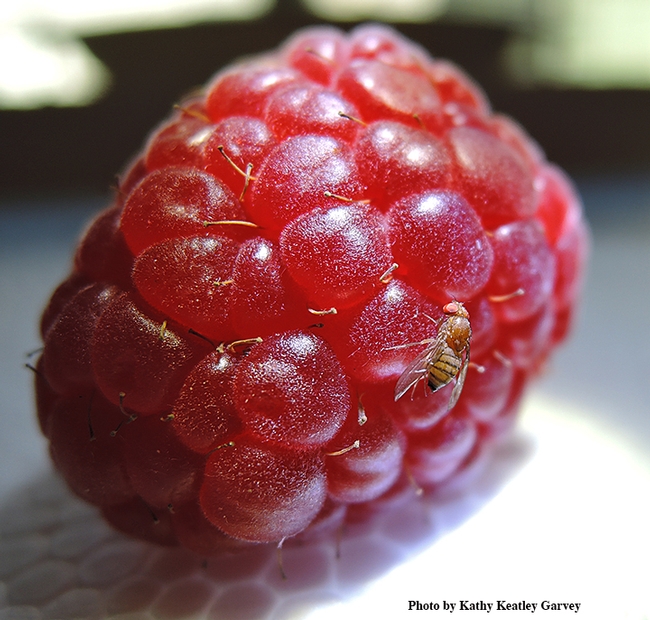
- Author: Kathy Keatley Garvey

That's part of the creative title of a seminar that Arnaud Martin, assistant professor of biology, George Washington University, Washington, DC, will deliver next week to the UC Davis Department of Entomology and Nematology.
Martin, an evolutionary geneticist who studies butterfly wing patterns, will speak on "Do Butterflies Dream of Genetic Tattoos? Exploring the Genotype-Phenotype Map Using CRISPR" at the UC Davis Department of Entomology and Nematology seminar at noon, Friday, Oct. 19 in 122 Briggs Hall, announced seminar coordinator Geoffrey Attardo, assistant professor, UC Davis Department of Entomology and Nematology.
CRISPR is an abbreviation for Clustered Regularly Interspaced Short Palindromic Repeats. Definition: Segments of DNA containing short, repetitive base sequences in a palindromic repeat (the sequence of nucleotides is the same in both directions).
"He is doing some really cool work investigating the mechanisms underlying wing patterning in butterflies using CRISPR to knock out genes that regulate those mechanisms," said Attardo, who noted that the seminar was initially scheduled for 4:10 p.m., Wednesday, Oct. 17 but was changed to noon, Friday, Oct. 19.
Martin, who researches the evolutionary and developmental genetics of butterflies and moths, was recently quoted in a Washington Post article (Sept. 19, 2017) titled "Mutant Butterflies Reveal the Genetic Roots of Colorful Wings." Reporter Ben Guarino wrote: "Engineered mutant butterflies give a glimpse deep into the genetic roots of wing patterns, an international team reported Monday in the Proceedings of the Natural Academy of Sciences. The authors of the new study rearranged colors on butterfly wings by deleting a single gene using a genome editing tool called CRISPR. The gene's absence had a dramatic effect in sever butterfly species, including some that aren't closely related."
"We use butterfly wing patterns as a proxy to understand fundamental rules about the function of genes," Martin told Guarino.
About his UC Davis talk: "Understanding the generative mechanisms of morphological diversification requires the routine manipulation of genomes in a comparative context," Martin says. "I will present how current work using CRISPR mutagenesis has allowed to decipher developmental mechanisms behind the diversification of a spectacular of morphological radiation: the color wing patterns of butterflies. These experiments illustrate how evo-devo can delve into the genome-to-phenome relationship at different taxonomic nodes, from population levels to more macro-evolutionary scales. I will discuss this principle in the broader context of GepheBase (www.gephebase.org), a database of known genotype-phenotype that compiles from the literature more than 1600 allele pairs across all Eukaryotes."
Martin received his doctorate in biological sciences in 2010 from UC Irvine (thesis: "The Developmental Genetics of Color Pattern Evolution in Butterflies.") He then did postdoctoral research at Cornell University and UC Berkeley before joining the Department of Biological Sciences at George Washington University in January 2016.
He's the principal investigator on a $414,266 National Science Foundation grant (2017-2020) on "Collaborative Research: cis-Regulatory Basis of Butterfly Wing Pattern Evolution," and co-author of a research article on "CRISPR/Cas9 as the Key to Unlocking the Secrets of Butterfly Wing Pattern Development and Its Evolution," published in December 2017 in Advances in Insect Physiology.
The abstract: "With the exception of a few moth and butterfly species, gene-editing tools in Lepidoptera have been lagging behind other well-studied insects. In order to elucidate gene function across the order, it is necessary to establish tools that enable such gene manipulation. CRISPR/Cas9 is a promising technique and here we review the recent progress made in implementing the technique in butterflies; from broad patterning of the wing, to the development of specific colours in particular wing sections, to eyespot formation. The often species-specific responses to the CRISPR/Cas9-induced mutations in candidate genes, underscore the significance of these genes in the wide evolutionary diversification of butterfly wing patterns. We further discuss potential caveats in the interpretation of the resulting mutant phenotypes obtained through CRISPR/Cas9 gene editing. Finally, we discuss the possibilities CRISPR/Cas9 offers beyond mere knockout of candidate genes, including the potential for the generation of transgenics that will further elucidate the developmental genetic basis for wing pattern evolution."
Attardo says the seminar will be recorded and posted at a later date.
